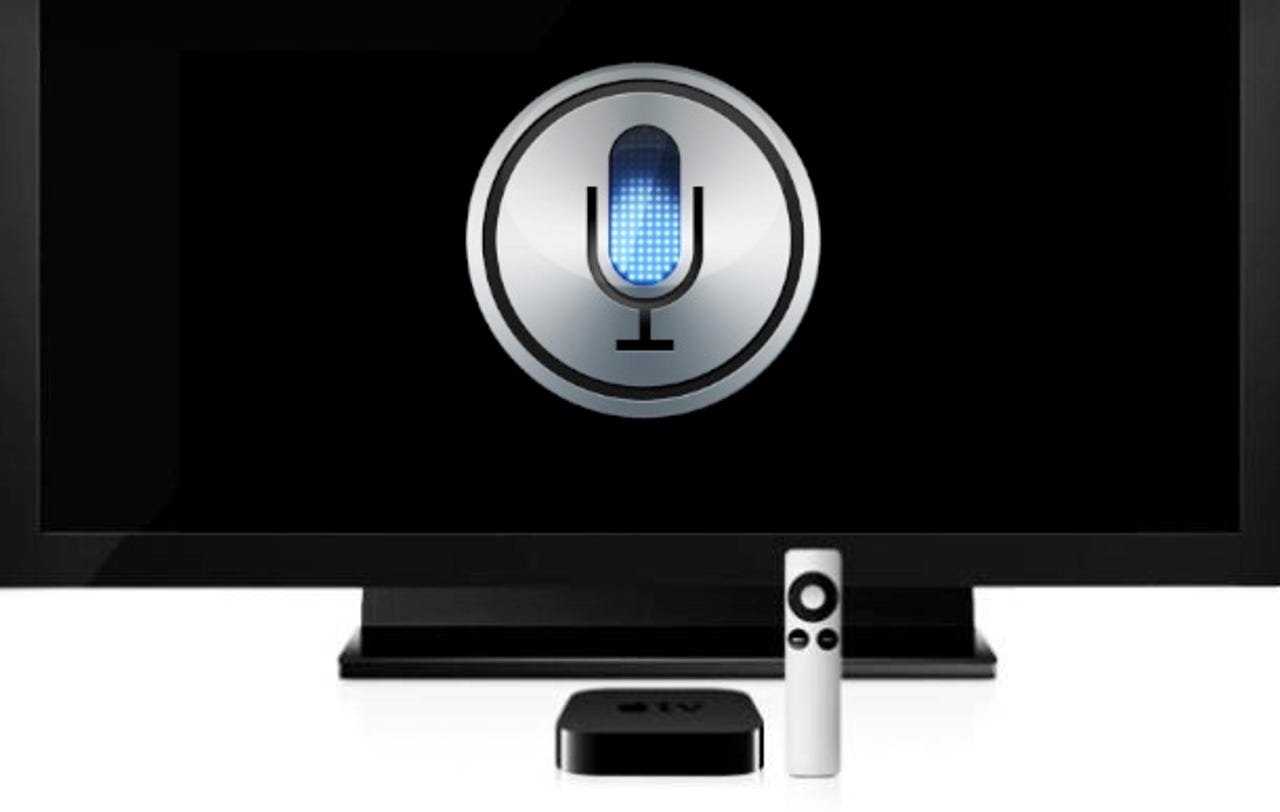How Siri could be put to work in the living room

While I'm far from convinced that there's a demand for an Apple branded television set, I do believe that the iPhone and iPad maker is eyeing the living room. And, a key technology to help it make a play for this space is the Siri voice assistant technology.

Pundits and analysts have been confidently predicting for years that Apple will launch a television, but so far the company has shown no signs of making a play into one of the oldest and most cutthroat of consumer electronic markets.
Personally, I can't make a convincing case for Apple to make a television simply because what's wrong with the modern television is not the screen, or the box that houses the screen, the problem is down to what's displayed, and how we interact with the device.
Rather than develop a television, I believe that Apple is far more likely to improve on the Apple TV set-top box—a device that can be hooked up to any display with a spare HDMI port—or maybe come out with a new device, such as a widely-rumored games console.
Whatever Apple comes up with—if it comes up with anything—these devices will no doubt be equipped with a technology that's already in the hands of millions of iPhone and iPad users: Siri.
While Siri has a long way to go before it is perfect—Apple claims that the technology is still in beta testing phase—having used it on both the iPhone and iPad I'm convinced that it has potential to change the way that we interact with devices. When it works, it is a natural, easy, and mostly hands-free way to interact with the iPhone or iPad. It brings to life the sci-fi dream of being able to talk to computer as opposed to bash away mindlessly at buttons.
Like it or loathe it, Siri makes technology more human, and this in turn makes technology friendlier and more immersive.
While the television remains the undisputed focal point of the living room, the humble remote control is where the real seat of power. Control the remote, and you control the TV. While remote controls have come a long way from the bulky, wired contraptions of mid-'50s, the concept of pressing a button to achieve a desired action hasn't changed much in that time.
While televisions have become larger and thinner, flatter and ultimately better, the remote control has remained mostly unchanged.
Televisions have become larger, thinner, flatter, and better, but the tool we use to interact with it—essentially the physical user interface—has hardly changed in over six decades.
This is where Siri comes in. Button presses are replaced with natural language. Sure, there will be times where Siri isn't going to be convenient—such as for raising and lowering the volume—but in these cases the user could switch to alternative means of control, one of which we will come to shortly.
Siri relies on voice control, but I don't think that shouting at a device on the other side of a living room or bedroom is going to feel natural.
There are two ways that Siri could be leveraged.
The first is that existing iOS devices such as the iPhone and iPad could be used as remote control devices for the television, set-top box or games console. These devices have high quality microphones and could act as smart remote controls for any new devices Apple comes out with.
There's already an app that turns iPhones and iPads into remote controls for the Apple TV set-top box, and it is far superior to the bundled infrared remote control. iOS-powered devices are already becoming accessories for other devices in the Apple ecosystem. And why shouldn't they? Will several hundred million iOS devices sold to date—including the Apple TV set-top box, which runs a modified version of the mobile operating system sans Apple App Store—they're ubiquitous enough to take on this role.
Another option is that Apple could bundle a remote control that incorporated a microphone with whatever device the company releases. This could offer both traditional controls and Siri-based voice control through the use of a touchscreen display. If money is no object, then the remote could be designed to support specific apps.
Apple could also augment Siri with other technologies, such as gestures. These gestures could be used to control features such as changing channel, or raising and lowering the volume. Waving your hands at a TV might seem unnatural, but the success of Microsoft's Kinect motion controller has proven otherwise.
Job postings suggest that Apple continues to invest in making Siri work better, and it makes sense that this technology won't forever be confined to iOS-based devices. The future is not just about the technology we use, but how we interact with this technology.
Searching for those cat videos will never be the same again.
Thanks to Nickolay Lamm of MyVoucherCodes for the images, and to Yelena Lamm bringing the concepts to life.